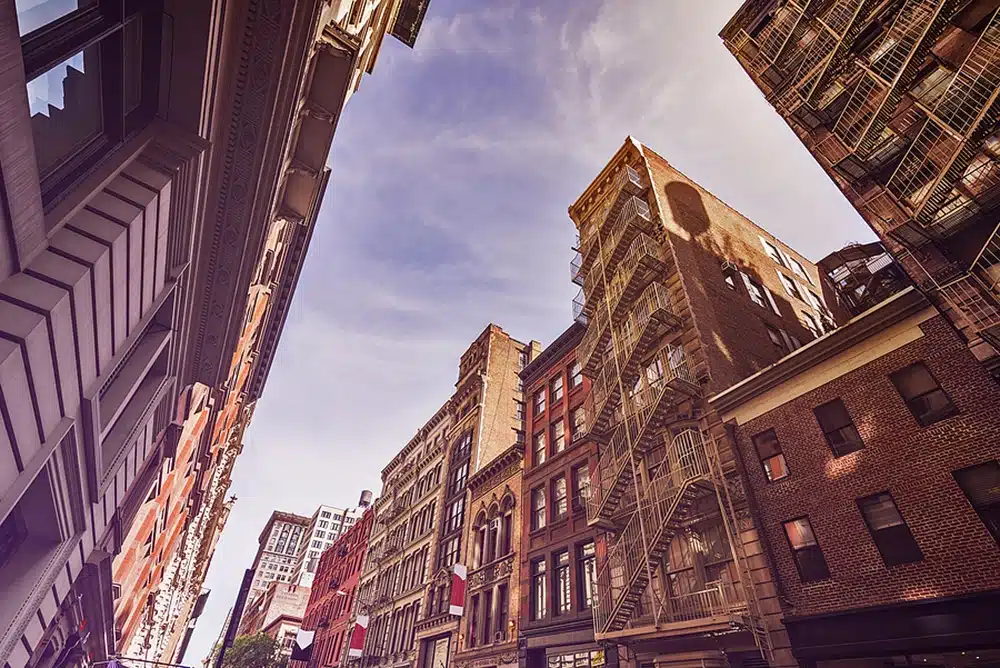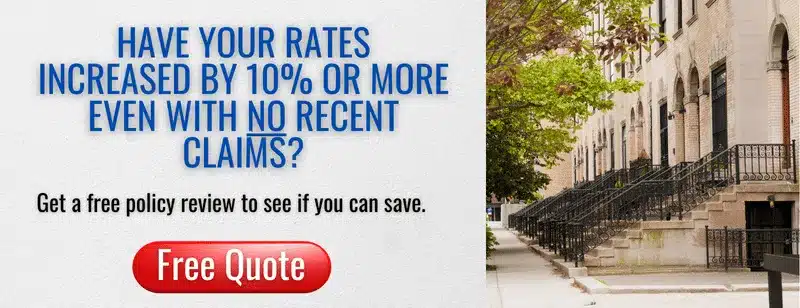A Guide to Understanding Multi-Family Building Insurance

People call our office all the time, wondering why multi-family building insurance is so much higher than homeowners’ insurance. Sometimes they’re even wondering why an insurance company declined to make them an offer.
To qualify for the best insurance rates (and policies), look at your building the way an insurance company would. Insurance is about factoring risk and potential damages. How does your multi-family building rate in those two areas?
Another thing to consider is the location of your multi-family property. Generally speaking, any residential building divided into two or more units qualifies as a multi-family dwelling. New York State goes a further step and distinguishes between two-family houses and buildings with three or more residential units, which fall under the NYS Multiple Dwelling Law.
In New York City, owners of multi-family properties classified as multiple dwellings must comply with many city-specific regulations. Because of these complex regulations, which change frequently, many insurance companies won’t insure multi-family dwellings in the five boroughs.
Why Multi-Family Building Insurance Is Crucial
Unlike homeowners insurance, multi-family property insurance protects both the building itself and the owner’s income from the property. A comprehensive insurance policy will pay for damage to the property from storms, fire and other covered events; protect building owners from liability claims; and, with the right riders, replace lost income if units become uninhabitable due to a covered event.
Even for building owners who don’t have any liens or loans for the property, multi-family building insurance offers invaluable financial protection. The trick is to get the right coverage at the best price.
Common Risks Covered by Multi-Family Building Insurance
To start, multi-family dwelling insurance provides coverage for the property and the building owner’s contents (e.g., common room furnishings, appliances, office equipment, etc.), as well as liability protection. (NOTE: Owners of multi-family properties should consult with their financial planners to determine whether they should purchase additional protection with an umbrella policy.)
Other common risks included in multi-family building insurance policies:
- Loss of Rents. If a covered event (e.g., fire, storm, vandalism) makes a unit uninhabitable, loss of rents coverage will replace the lost rental income during the repair period.
- Water Liability/Sewer Backup. This coverage pays for water damage caused by sewer backup. It’s especially useful for building owners in New York City, backups are common due to the older infrastructure.
- Ordinance or Law Coverage. Insurance policies will restore the building to its previous condition at the time of a covered claim. If building code changes require construction updates, this special coverage will make up the cost difference for meeting the new standards.
- Other Perils. Depending on the property location, among other factors, building owners should speak with an insurance advisor about adding specialized protection against specific perils, such as floods and earthquakes.
Factors that Affect Your Insurance Premium
Building age is a big factor for several reasons. Things like old wiring or outdated furnaces are obvious, but the insurance company also worries about risk factors like asbestos and lead-based paint.
- What shape is the plumbing in?
- What are the firewall ratings?
- If a fire breaks out in one apartment, can it be stopped without damaging others?
Check out these things in advance, and you’ll be better equipped for negotiations when that time comes.
When you buy a new policy or renew an existing one, the insurance company will evaluate the building’s condition to set premium rates. Doing your own inspection in advance, and fixing what can be fixed, will save you big.
Some of the things to look for include the following:
- Smoke alarms, fire extinguishers and fire escapes
- Good working stairs (and railings)
- Prominent exit signs, well-labeled circuit breaker boxes
- Uncluttered basements, especially near furnaces
- Well-lit hallways and public areas
How to Choose the Right Multi-Family Building Insurance Policy
Remember that, just as you don’t want prospective tenants to evaluate your property purely on price, buying insurance on price alone can be a bad idea. “Similar” policies can be more like apples and oranges and bowling balls in terms of comparison. What are you really getting for your money?
Lenders generally require that multi-family properties be insured for the loan amount. While this protects their investment, it doesn’t necessarily cover yours. Make sure you base your policy limits on replacement cost coverage.
Multi-family properties should also carry loss-of-rent coverage. This protects landlords against loss of rental income, in case a covered peril renders one or more units uninhabitable.
Other considerations include the following:
- What is the financial rating of the company backing up the policy?
- What do the policies actually cover?
- Do your property and needs match the insurance carrier’s product and service?
Ensuring Comprehensive Coverage for Peace of Mind
Owners of multi-family dwellings, particularly in New York City, have special needs to protect their investments. To get the right policy for your unique situation, work with a broker who specializes in New York City landlord insurance. Such a partner will know all the available carriers and programs in your market. He or she can also recommend the right fit for your needs, saving you time and hassle, as well as money. And brokers who are also licensed agents can bind a policy quickly—in case you need insurance for an immediate closing.
If you have questions about multi-family building insurance or want a free review of your current landlord policy, please call our office at 877-576-5200.

